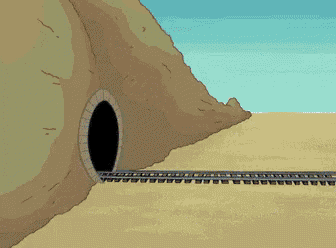Can’t think of a better community to ask.

There are double decker subway trains in Sydney, Australia
So that’s a subway and not a commuter train? Hard to tell.
It’s both. They’re the same trains in Sydney. It’s mostly an overground network with several underground parts in the city centre
This style was commissioned starting in the 70’s, when population density was lower, there were fewer trains, and average travel time was higher due to suburban sprawl and most workers employed in the inner city; many spent 1 hour or more on the train each way.
There’s a new metro project that looks more global.
The problem is that you need very tall tunnels for that. Subway tunnels are usually some of the narrowest tunnels in order to be cheaper to construct and the trains are built to be accordingly small too (an extreme example being the deep-level London Underground lines).
There’s nothing technically unfeasible about it. Underground railways with double-decker trains are a thing already, I commute through this station every day, though usually with a single-decker train; this is a mainline railway served by both single-decker and double-decker trains (the latter pulled by heavy locomotives, you can’t see that on the other photo because that is the other end of the train).
The main downside of double-decker train cars is the time it takes passengers to to board them. And, since this is one of the main factors limiting metro frequencies and thus capacity, they’re not that suitable for subways. To maximize metro capacity, you want long trains with many doors and very high frequency.
Double-decker cars are much more suitable for lower-frequency service (S-Bahn, regional, long-distance,…) where they’re also commonly used.
Of course, you could still use double-decker cars in a metro (and maybe some places do), it’s just suboptimal.
Two level platform? Then you’re actually boarding double the number of passengers, could be useful in very busy stations.
They did but they forgot to make the hole bigger and it was quite a mess
Why stop there? Triple decker subway cars with stations having three stories of platforms so exiting is easy
No one has mentioned the idea of having double-decked stations to make it so you don’t have to worry about moving to the right floor in advance of your stop.
I would posit this as a given if we bothered to make taller tunnels for taller train-cars, but based on other comments here, I’m not sure this idea actually makes the concept of double-decker subways any more sensible or useful.
It looks like those metros that have a use for the idea have made it work in their own way and places that haven’t tend to have significant reasons of their own for not going this route. Enlarging existing tunnels vertically seems to be a non-starter in most places, for instance.
As subways are usually intended for traveling short distances, the passengers have to get in and out fast. Thus, subways usually have doors in shorter distance from each other than e.g. in train trolleys, that are used on lines where the stations are in larger distance from each other than subway stations usually are. The trolleys of double decker trains have stairs close to the doors, thus the trolleys for subways would need to have equivalently more stairs. Subsequently, the space gained for passengers to sit or stand would be much less than e.g. for double decker trains.
You’d have to get up and off the second floor before your stop.
That doesn’t address anything he said.
… You are on the train. The station you want to get off is coming up soon. You stand up. You walk down the stairs. You stand at the doors. So far this is all before the station you want to get off at. When you arrive at the station you want to get off at, you walk off. That solves the getting off quickly problem. You don’t need lots and lots and lots of stairs to the point that it takes up more seating capacity than a second floor.
That scenario is assuming it’s not packed, and that there is only one person trying to do it.
Which is exactly why you didn’t address anything he said, and why this still doesn’t.
Being crushingly packed it a valid concern but yes it addresses his point. As does this: don’t sit on the top if your station is one of the first 1-2 downtown, where you can’t get down to the first floor.
You’re very adversarial for some reason so ciao.
but yes it addresses his point.
No, it doesn’t.
His entire point is that subway trains have a lot of doors, leading to a lower seat/door ratio. Your response doesn’t at all address that this ratio would change, or the actual repercussions of changing it.
In other words, you don’t know what you’re talking about, but you’re acting like you do.
You’re very adversarial for some reason so ciao.
I am matter-of-factly telling you that you’re not making a relevant point. If that’s “adversarial” to you, then you need to get your detector calibrated.




